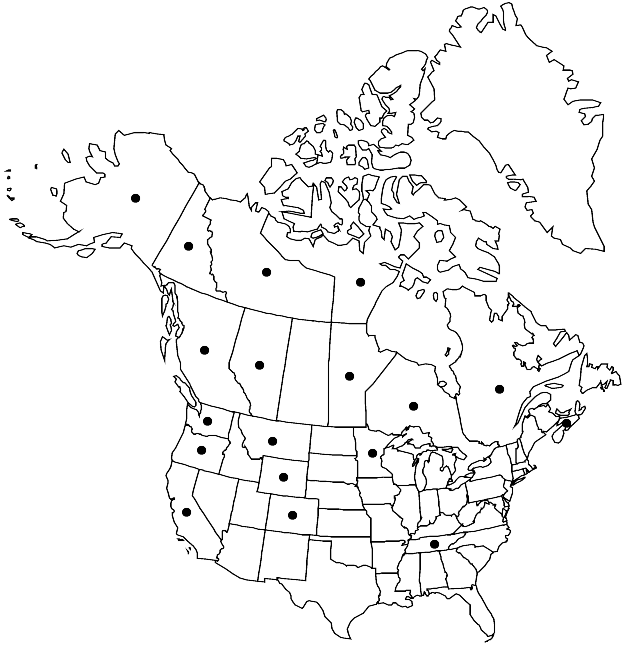Philonotis fontana var. pumila
Bryol. Univ. 2: 20. 1827.
Basionym: Bartramia fontana var. pumila Turner Muscol. Hibern. Spic., 107, plate 10, fig. 1. 1804
Treatment appears in FNA Volume 28. Treatment on page 112.
Plants small. Stems 1–6 cm. Leaves with distalmost not spiraled around stem, stiffly erect, sometimes somewhat secund, crowded to distant, lanceolate, not plicate. Capsule 1–2 mm.
Phenology: Capsules mature Jun–Aug.
Habitat: Seepage slopes, along creeks, clay, silt, intermixed with other bryophytes
Elevation: low to high elevations (0-3300 m)
Distribution
Loading map...

Alta., B.C., Man., N.S., N.W.T., Nunavut, Ont., Que., Yukon, Alaska, Calif., Colo., Minn., Mont., Oreg., Tenn., Wash., Wyo., c, n Europe, c, sw Asia, Atlantic Islands (Iceland).
Discussion
Variety pumila is diminutive and typically grows in dense mats or sods; the stems are tightly interlaced with tomentum. The stiffly erect leaves that are neither catenulate nor spiraled aid in its identification. The range is arctic-alpine. This variety is a characteristic member of bog communities throughout the Arctic tundra and taiga.
Selected References
None.
Lower Taxa
None.